Osteochondrosis is the most common cause of back pain.Damage to intervertebral discs underlying the development of the disease is found in every second person who has reached 40 years of age, and up to the age of 50, 70% of the population is already amazing.At the same time, today osteochondrosis is increasingly found among young people and even adolescents.Intervertebral hernia, radicolitis, brain supply disorders - all of these are complications of osteochondrosis that threaten disability and often lead to disability.
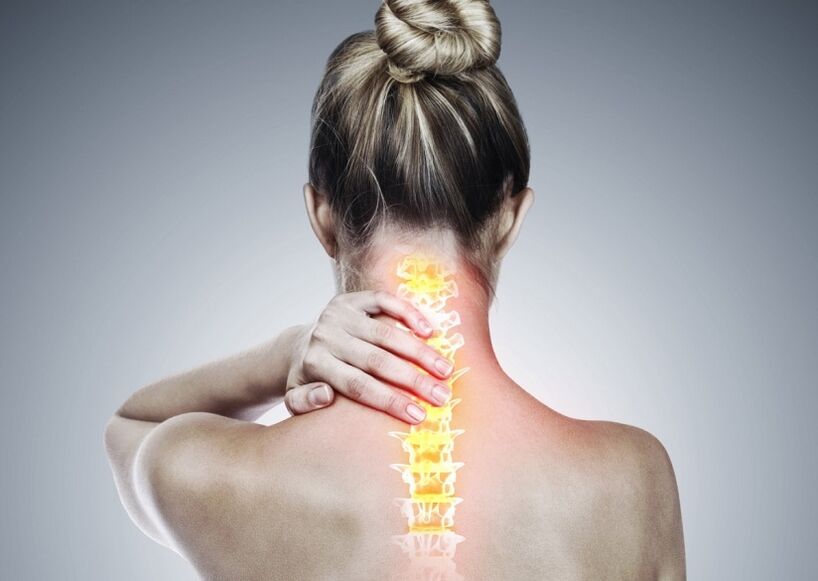
Currently, effective treatment methods that allow not only the removal of symptoms but helping to restore destroyed vertebrae areas, in traditional medicine there is almost no.Therefore, it is so important to understand which factors lead to the destruction of the discs, what needs to be changed in their lifestyle in order to stop the development of osteochondrosis.And what measures should be taken to cope with existing changes and the onset of recovery processes in the back.
What is osteochondrosis?How is the disease progressing?
Osteochondrosis is a disease in which the processes of destruction in the spinal -motor segment begin to prevail over recovery processes, which is manifested by pain in the back, a restriction of mobility, etc.In the course of the development of this disease, intervertebral hernia, radiculitis (radiculopathy), imia and other complications can be formed.
The intervertebral disc (in the further text referred to as "disk") is a ring of elastic fabric, whose strands are woven into a dominant and basic vertebrae.Due to its particular structure, the intervertebral disk protects each beads from destruction, and also ensures the mobility of the entire spine (tilments, twisting).
In the center of the intervertebral disc is a pulpic nucleus, which resembles a juice -filled rubber pillow.In an adult, it consists of 70% water, as well as carbohydrates that can be connected and give water.At the time of the cargo in the relevant spine segment, the essence gives water and flattery, and after the end of the effect it takes the previous form.Such a pillow that absorbs shaken allows the spine to accept and extinguish up to 80% of the shock load coming into the back.
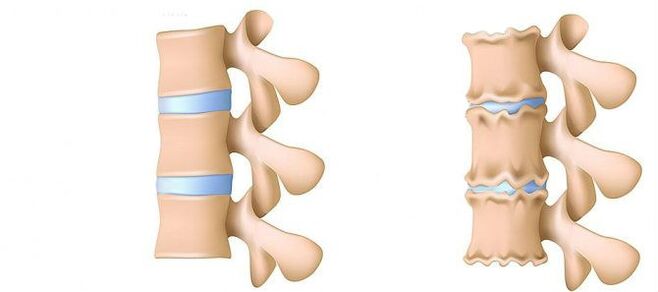
Degenerative-destrophic processes most often begin with a deterioration in the function of absorbing the intervertebral disc stroke.
- Deterioration of blood supply to the intervertebral disc.In adults, the feeding of the intervertebral discs is performed by diffusion: blood is delivered only to the beads, and already "penetrates" the discs.In the best way, the disk is enabled during dynamic loads (for example, walking), as the principle of the pump (leakage of processed fluid when compressed, nutrient flow and oxygen when removing the load).Thus, feeding the intervertebral discs is difficult especially in conditions of a sedentary lifestyle (hypodynamine).
- Changes in the pulpic disk core.With a deterioration in the supply of blood, the supply of water, sugars and amino acids in the pulposa core worries.Because of this, the production of carbohydrates that connect water suffers.The nucleus is dehydrated, its structure made of gel turns into fibrosis, the ability for spring and the extinction of the shooting deteriorates.This increases the load on the fibrous ring and vertebrae, they are more likely to be blocked and hurt.
- Changes in the fibrous ring of the intervertebral disc ring.Due to the flattening of the pulposal core, the increased load extends to the ring of the fibrous disk.In conditions of poor blood supply, the fibrous ring loses its strength.The spine instability occurs, which can lead to the formation of an intervertebral hernia, a shift of vertebrae and spinal cord damage or nerve roots.
- Discussion.The formation of the intervertebral hernia.As fibrous ring strands weaken, the pulpic core begins to climb, for example, towards the intervertebral canal (disk extension).Such a shock can further lead to a rupture of a fibrous ring and the formation of a hernia.Read more about the process of forming the intervertebral hernia in a particular article - "Effective treatment of intervertebral hernia at home".
- Spondylosis - destruction of intervertebral joints (spondylartrosis), increased osteophytes and ossification of ligaments.In parallel with the formation of intervertebral hernia in osteochondrosis, damage to the intervertebral joints, destructive changes in the vertebra (cartilage) and ligaments are observed.
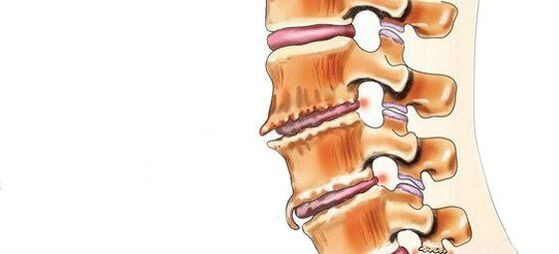
Since the function containing the intervertebral disc shock is not performed, the beads and small intervertebral joints begin to be constantly injured.
Spinal cord instability is also the cause of cartilage damage to the vertebrae and articular processes.As a result, bone tissue grows, osteophytes appear(From Greek: Osteo - bone, phyto - plants)- Bone growths.The emergence of osteophytes is popularly called the formation of rivets or deposition of salts.
- Osteophytes can constantly irritate the vertebral segment ligaments, which gradually lead to their oscillation and restricting movements to the affected spine.
- Osteophytes can also damage the nearby soft tissue, a result of which is the accumulation of dead cells in them, to which the body responds with inflammation (edema).
- Osteophytes on the surfaces of the vertebrae facing the intervertebral discs damage the fibrous ring strands, accelerating the formation of a hernia.Osteophyt, which grows towards the intervertebral canal, increases compression of the spinal cord, blood vessels, nerve roots.
- Increasing osteophytes can lead to wrapping of neighboring vertebrae and complete loss of mobility in the vertebral segment.
Symptoms and signs
Symptoms and signs of osteochondrosis - back pain!Initially, back pain can occur due to the overload of the back muscles that try to concentrate the vertebrae in the moving moving (Stage 3), so the muscles protect the spinal cord located in the vertebral column.The spinal cord is the central part of the nervous system, so the body tries to prevent its damage (squeeze, irritation).Subsequently, the cause of the pain can already be vertebrae beads, hernial extension even with a small size.At the time of the appearance of a hernia, a person, as a rule, feels severe pain (this is what is called cervical or lumbar lader).

Due to the back pain, a person involuntarily seeks to take a position in which the intensity of the pain is reduced - so called, forced.At the same time, the spine is in a non -violent position that reduces the depreciation skills of the disc.This increases the risk of their further damage.
As the violations progress to the joints, the development of oshification of vertebral bodies, articular surfaces and ligaments, the patient's back begins to lose mobility.Partial restrictions, and then complete for movements in the affected spine.
Complications of osteochondrosis of the spine
There are several stages of developing osteochondrosis complications of the spine.Their manifestations depend on the department in which the destructive process occurs.
- Dyscogenic radiculitis (radiculopathy), in which hernial extension squeeze the nerve root (a bunch of nerve fibers, extending from the spinal cord and then divided into nerves that go to one or another area of the body).The pain is due to the mechanical effect of hernia on the back, and the increase of inflammation (edema).
- Vascular-brown syndrome, in which the vessels that feed the roots of the spinal cord are squeezed.It is manifested by damaged movements in the hands (with cervical osteochondrosis) or lower extremities (with lumbosacral), as well as a loss of sensitivity.With this complication, the work of the internal organs can suffer, for which the affected nerves (urination, sexual function, intestinal work, etc.) go, can develop, hypertension can develop and deteriorate memory.Sometimes vascular violation occurs suddenly, with a sharp movement in the affected area of the spine - most often, in the lower back.There is a sharp pain and sudden weakening of the muscles on the affected side - syndrome "was paralytic“
- Violation of blood supply to the spinal cordcaused by the compression of vessels that feed the spinal cord.The extreme degree of complication is an ischemic spinal stroke.The result of this complication is the damaged movements in the limbs (paresis, paralysis), loss of sensitivity, deterioration in the work of internal organs until complete rejection.In some cases, this can lead to the death of the patient, for example, when the kidney function suffers seriously.
Symptoms of dyscogenic radiculitis depend on the spine:
| country | Symptoms and signs |
|---|---|
| Cervical cervical radiculitis | Depending on the level of damage, pain and damaged sensitivity to the neck, shoulder, forearm, fingers occur.Muscle weakness in these departments can also be observed. It often joins the neuralgia of the occipital nerves, in which severe pain in the back of the head is observed.Arrhythmia can occur. |
| Radical | It is manifested by pain in the lower back, which is often combined with pain during the sciatica - Ishias, Ishiraculite.The weakness of the leg muscles also develops, a violation of the sensitivity in the thighs, lower legs and legs can occur. |
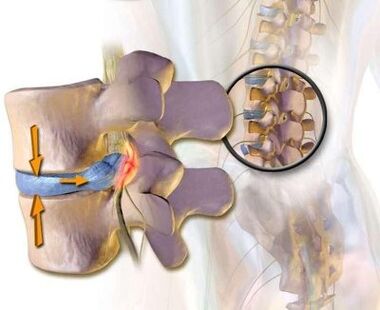
The displacement of vertebral bodies or intervertebral discs with subsequent squeezing of blood vessels and nerve roots may require urgent surgical intervention.
Reasons for the development of osteochondrosis of the spine
Osteochondrosis is called a multifactorial disease - ie.There can be many reasons for its appearance.Here we will single out two main factors that gradually lead to the loss of intervertebral discs and subsequent changes in the back:
- Deterioration in conditions of electricity supply of intervertebral discs as well as cleaning their tissue.
- Excessive load on the spine, which leads to accumulation of dead cells in vertebral segment tissue.
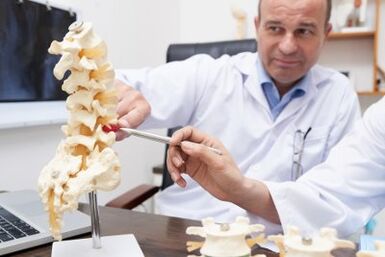
Updating the tissue of the intervertebral drives depends on the sufficientness of the blood flow and the lymph flow directly to the intervertebral discs, neither the blood nor the lymph vessels are appropriate (which serve in the body to purify the tissues).Nutrition and disk cleansing is performed indirectly, that is, slowly.That is why in this area not only happens quicklylack of nutrients and oxygen hungerbut even quicklyDamaged and dead cells accumulateas well as processed substances.Cleaning fabrics from "slag" is needed, otherwise there will be no room for the emergence of new functional cells, and then the fabric will gradually lose its function (for example, the essence of the disk pulpoosis will rest in spring, depreciation and be slow).
Updating the tissue of the intervertebral discs depends on the sufficientness of the blood flow and the lymph flow.The speed and strength of these processes is affected by the microvibration of the (mainly) muscles of the back during physical stress.In this regard, one of the reasons for the lack of food and purification deficiency is the hypodynamia when the posterior muscles are smooth or in a static position.
As osteochondrosis develops, blood supply, lymph and venous flow in the spine can worsen due tomuscle spasm.The body gives a signal to the muscles to keep the vertebrae in a certain position with respect to one another in the affected area.For a long time, excess muscles squeeze the vessels for a long time, which further exacerbates the situation.
It is clear to most people that the spine can suffer in the case of an unusual lifting of weights or when damage, however, spine damage can be daily and not so vulnerable in the event of a neuromuscular depreciation system violation.Continuous microtraums under poor lymph flow conditions lead to the accumulation of dead cells, prevents the growth of functional cells, and further leads to tissue oscillation.
Violation of neuromuscular depreciation as one of the main causes of osteochondrosis
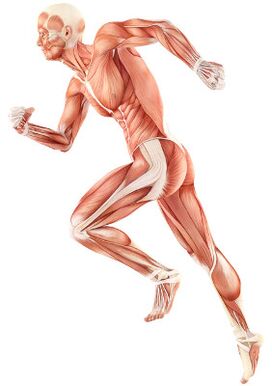
Violation of neuromuscular depreciation as one of the main causes of osteochondrosis in order to reduce the load on your back when walking, lifting weights, etc.The body has a whole system of neuromuscular depreciation.It is provided by the functioning of the nervous system of the body and skeletal muscles that interact in the arrangement to provide smooth movement and extinguish shock loads in the bones, joints and, of course, spinal cord.So most shock loads have to extinguish the leg.Also, the leg and back muscles are involved in depreciation.If this does not happen (for example, unpleasant shoes with high behavior do not allow the foot to work), the intervertebral discs are subject to shocks that are not intended.Factors leading to disputes in the neuromuscular depreciation system are listed below:
- Violation- Different types of spinal curves that impede that "spring", the use of non -physiological furniture when working in the office, etc.
- Walking, steering techniques (correct when running, transfer weight from feet to heel);
- Wearing high -heeled or heel -free shoes, which adversely affects foot depreciation skills.
- Overload(playing sport, exhausting physical work), traumatic joints and spine
- Thickening- excess weight shifts the center of body gravity as well as adipose tissue complicates muscle blood supply, behavior of nerve impulses;
- Driving in shipping without depreciation (in a standing position you can spring with your feet);
- Disordishes nervous system function disorders, for example, due to the frequent use of sedatives that adversely affect nerve conductivity.
- DecayDue to the excessive formation in the body of decay products.This can be associated with insufficient physical activity - a prerequisite for the work of the lymphatic system, which is responsible for clearing tissue from metabolic products and dead cells as well asLiver disease, chronic seals of inflammationetc.
Hypodinamine
One of the reasons for widespread osteochondrosis in recent decades is an epidemic of a sedentary lifestyle.The back muscles and press in the usual life are not sufficiently involved and weakened quickly, and the strong muscles are needed for the health of the spine that are not overloaded with static tension but are busy with dynamic work.The back muscles are the weakest that weakens with the hypodynamine, which is fraught with the following consequences:
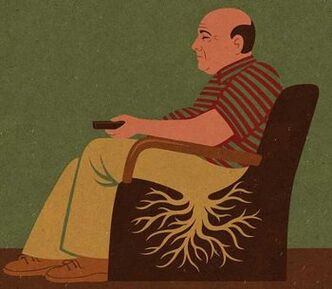
- Inadequate spine support in careless movements, which leads to the overload of the intervertebral discs, the relocation of the vertebrae and the appearance of intervertebral hernias.
- Deterioration of blood supply to the back: dynamic work of skeletal muscle is a prerequisite for blood flow to any organ, including the spine.As a result of insufficient functioning of the back muscles, the devastating changes in the intervertebral discs progress - cells die from a lack of nutrients and oxygen.And dead cells accumulate, interfering with restoration.
- The deterioration of the lymph flow and venous flow, which leads to the accumulation of dead cells in the tissue.Skeletal muscle work is especially important for the work of the lymphatic system, as most of its vessels (for example, lymphocapillars) do not have muscle walls, and the "push" of the lymph in the blood vessels depends on the work of the skeletal muscle.
4 Principles of effective treatment
In order not only to remove the symptoms, but to cope with the cause of the development of osteochondrosis, spondylosis, radiculitis and island, the following tasks must be resolved:
- Create opportunities for tissue clearing from dead cells.This is an indispensable condition for healing in order to inhibit further formation of osteophytes and relieve the space for tissue regeneration.To do this, restore/strengthen the lymph flow and venous flow from the affected segments;
- Improving blood supply in the affected area;
- Improve the tone of all muscles that support the spine.This will allow:
- Create conditions for stimulationselfBlood flow and lymph flow to the back;
- Restoring the functioning of the neuromuscular depreciation system, which is needed for adequate spine support to prevent new damage.
- Eliminate the pain because this will give an opportunity:
- Remove muscle clips that block blood flow to the back;
- Avoid compulsory positions.
Medicine therapy (medicinal)
Today, in the treatment of osteochondrosis and its complications, medicines of the following groups are used:
- Drugs of Anti -Inflammatory Necepoid (NSAIDs)- in the form of drug tablets or injections.These funds have the ability to reduce pain, to reduce the activity of inflammation.However, the effect of their use does not last long - from a few hours to two to three days.Therefore, such funds should be taken for a long time - weeks, and sometimes months.At the same time, these medicines adversely affect the mucous membranes of the gastrointestinal tract.Their long -term reception is fraught with the development of gastritis, ulcerative lesions.Moreover, they can adversely affect kidney, liver and contribute to the development of hypertension.And, at the same time, these funds do not contribute to the cleansing of the discs from dead cells.Therefore, using them is only a way to relieve symptoms for a while, but not to eliminate the main problem.
- Ctepoid anti -inflammatory drugs (gopmonal).As a rule, they are used for severe and impenetrable pain that accompany hernia, radiculitis, ishas, etc.Gopmons have the ability to eliminate manifestations of inflammation (due to the suppression of the immune system), relieve pain.But they also adversely affect the membranes of the gastric mucosa and intestines, promote the flow of calcium from the bones, inhibit the production of their gopions.And do not contribute to cleaning the focus of dead cells.
- Papasmolic- Drugs affecting the muscles or nerves that go to the muscles, and cause relaxation of skeletal muscles.These means helping to relieve muscle clips for a while, reduce pain and improve blood flow.But at the same time, they do not help clean the tissue from dead cells.Therefore, they do not contribute to the treatment of osteochondrosis.
- Epiduvision blockade- Introducing sedatives of sedatives and gopmonary agents into the space between the solid shell of the brain and the periosteum that covers the beads.It is used, as a rule, for intense pain - in the acute period of intervertebral hernia, with severe radiculus, Ishias.Depending on the composition, such an injection helps relieve pain for a period of several hours to several days.After the expiration date, the manifestations of the disease return because the procedure does not help restore metabolic processes to the discs.In addition, when performed, there is a risk of damage to the blood vessels and nerves.
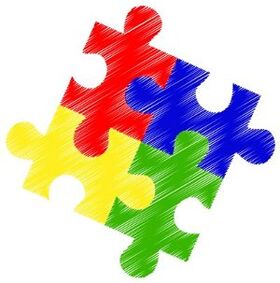
Both osteochondrosis and the development of complications progressYou need to run to medication more and more often, increase doses.This leads to high financial costs as well as further deterioration of health due to the side effects of drugs.
Drug therapy, as a rule, is supplemented by immobilization of one or the spine friend using orthopedic corsets with varying degrees of rigidity.
























